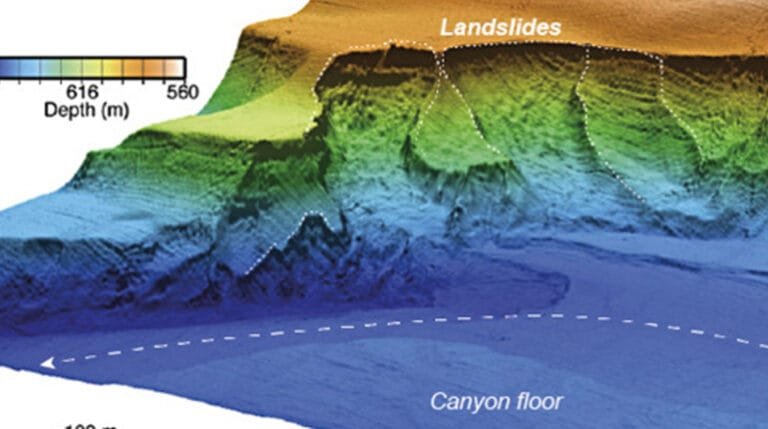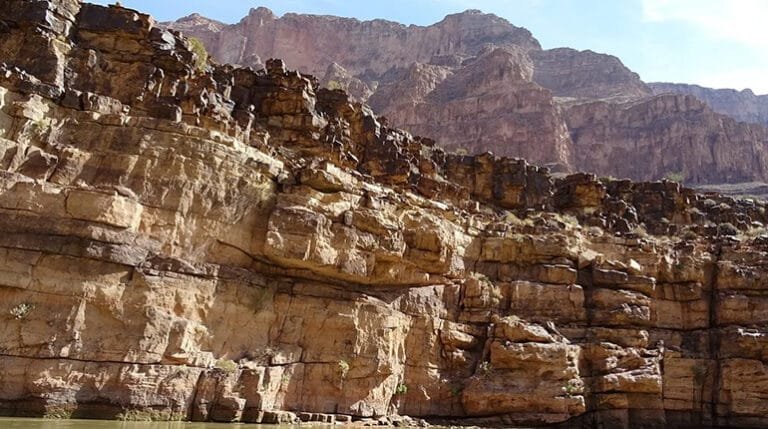Catastrophic Erosion: Insights from Rock Strata

Throughout history, the study of geological formations has raised significant questions regarding the processes that shape our planet. One of the most profound events recorded in the Bible is Noah’s Flood, a cataclysmic deluge that, according to scripture, covered the entire Earth. This event, occurring in a short time frame, is often dismissed or reinterpreted by certain scientific communities; however, a careful examination of rock strata from a young Earth perspective presents a compelling case for the reality of such a flood. The various layers of sediment, rapid fossilization, and catastrophic erosion patterns found in geological formations provide insights not only into the historical context of our planet but also affirm the biblical narrative.
As we delve into the geological evidence of catastrophic erosion, we will explore how sedimentary rock layers, typically attributed to slow processes over millions of years, may actually reflect the rapid and transformative nature of the Flood. This understanding challenges the conventional geological timeline and supports the biblical account of a young Earth, suggesting that the Earth is approximately 6,000 years old. We will examine how rock strata can be interpreted through the lens of a global flood, ultimately offering a perspective that aligns with Scripture while contributing to our understanding of Earth’s geological history.
Understanding Rock Strata
Rock strata are layers of sedimentary rock that have accumulated over time, capturing the history of the Earth in physical form. Traditionally viewed through the lens of slow geological processes such as sedimentation and erosion, these layers are often interpreted to represent millions of years of Earth’s history. However, when examining these layers in light of the catastrophic events described in the biblical account of Noah’s Flood, a different understanding emerges. Rock strata can represent not only the slow deposition of sediment but also the rapid and extensive processes triggered by a worldwide catastrophe.
The Characteristics of Sedimentary Rock
Sedimentary rocks are the product of the accumulation of sediments and organic materials which have been compacted and cemented over time. There are several key characteristics of sedimentary rock that warrant attention in the context of catastrophic erosion:
- Layering: Sedimentary rocks typically exhibit distinct layers, or beds, which can vary in thickness, composition, and fossil content.
- Fossilization: Fossils found within sedimentary rocks often indicate rapid burial, allowing for the preservation of organic material.
- Grain Size and Composition: The size, shape, and mineral content of the grains provide clues to the environment of deposition.
When viewed through the lens of a catastrophic flood, these characteristics can be explained as a result of rapid sedimentation under extreme conditions, contrasting the slow cosmological processes commonly assumed by modern geology. For instance, the presence of fossils suggests swift burial during the global Flood, rather than long-term accumulation.
Evidence of Catastrophic Erosion
In examining the evidence for catastrophic erosion, we can turn to multiple characteristics associated with sedimentary layers that align with the narrative of Noah’s Flood. The implications of these observations provide a foundation for reconciling geological phenomena with Scriptural accounts.
Unconformities and Erosion Surfaces
One notable feature of rock strata is the presence of unconformities—gaps in the geological record where erosion has occurred. These unconformities are often interpreted as lengthy periods of time between sedimentary deposits. However, from a biblical perspective, these gaps can represent the erosion and displacement caused by the Flood. The sheer volume of water and the associated geological upheaval would have led to extensive erosion surfaces that carved out regions and reset the landscape.
Rapid Deposition and Thick Layers
Another compelling observation is the uniformity and thickness of sedimentary rock layers, often spanning vast regions. In many cases, these layers display characteristics of rapid deposition, contradistinguishing them from the slow, gradual processes typically emphasized in modern geology. The evidence indicates that whole ecosystems were swept away and buried quickly, suggesting an environment consistent with a catastrophic flood. This aligns with the biblical account, where rising waters are said to have destroyed all life on Earth, allowing for the rapid accumulation of sediment over numerous forms of life.
The Flood and Fossilization
Fossilization is another crucial aspect that challenges conventional geological interpretations. In an ordinary environment, fossilization is an extremely rare event, typically requiring specialized conditions. However, during a catastrophic event like Noah’s Flood, organisms would have faced a sudden onslaught of sediment. Here are some aspects to consider:
- Rapid Burial: The speed at which sediments would have buried organisms would reduce the chances of decay and scavenging, dramatically increasing the chances of fossilization.
- Mass Extinctions: The sudden environmental changes would lead to mass extinctions, accounting for the vast number of fossils found in a single layer across different geographical areas.
- Polystrate Fossils: Fossils such as trees embedded vertically through several layers of sediment suggest rapid deposition, which is difficult to reconcile with the slow processes over millions of years.
These points collectively illustrate that wave action and mudslides occurring during a flood would create conditions for fossilization that significantly contrast the established evolutionary time scales. This yields a more consistent view of the Earth’s geological history as a product of the Flood.
Catastrophism vs. Uniformitarianism
The debate between catastrophism, the idea that Earth’s features are primarily shaped by sudden, short-lived events, and uniformitarianism, which posits that slow processes acting over long timescales are responsible for geological formations, remains vital in understanding geological history. The narrative provided in the Bible supports a catastrophist view, particularly that of a global flood. In light of this, the young Earth perspective posits that:
- Historic Catastrophes: Major geological features, such as mountain ranges, valleys, and canyons, can be better explained as a result of sudden, massive changes rather than gradual processes.
- Rapid Changes: The reshaping of the landscape signifies that much of the sedimentary rock we observe today could have formed rapidly during or immediately after the Flood.
This concept provides a coherent framework in which we may interpret the Earth’s geological structure through biblically grounded assumptions, where numerous layers and unconformities reflect catastrophic geological events rather than slow, linear processes spanning millions of years.
Global Implications of the Flood
The global nature of the Flood carries significant implications for sedimentary geology. The vast amount of water covering the Earth would create extraordinary conditions for erosion and deposition. Considerations of how water interacts with the land reveal insights that are critical to understanding the Earth’s surface:
- River Formation: The immense volume of water would have led to the rapid carving of riverbeds, canyons, and deltas, observed today in various geological formations.
- Stratification Patterns: As water receded, it would have left behind a complex stratigraphy, with distinct layers reflecting different environments, all produced over a relatively short timespan.
- Massive Sediment Transport: One can postulate that sediments would be transported globally, depositing vast layers of sediment in diverse locations, pointing to a tumultuous event like the Flood rather than slow accumulation.
These observations lend credence to the assertion that current geographic structures can be attributed to a single global event, ultimately affirming the biblical narrative of Noah’s Flood. This perspective is further supported by flood legends present in various cultures, underscoring the significance of a worldwide inundation in humanity’s history.
Looking Forward: Compiling Evidence for Faith
When engaging with geological evidence through the lens of faith, it is essential to maintain a balance between scientific inquiry and doctrinal beliefs. As students of biblical apologetics, we are called to understand and advocate for the coherence of faith and science in discussion. There are several steps we can take to compile evidence supporting the biblical account from geological data:
- Research: Delve into literature that supports a young Earth model and the catastrophic implications of geological formations.
- Field Studies: Engage in practical observation of geological formations, looking for fossils, unconformities, or rapid deposition features.
- Dialogue: Participate in discussions with peers and mentors to explore the intersection of faith, geology, and science.
By adopting a mindset that approaches geology through the lens of biblical truth, we can boldly affirm our faith while engaging with scientific discoveries. Our understanding of the geological world serves not only to inform our beliefs but can also act as a platform for sharing the truth of the biblical narrative with others.
Conclusion
In summation, the study of rock strata, when placed within the context of Noah’s Flood, unveils a narrative that diverges from traditional geological interpretations. There is compelling evidence for rapid deposition, catastrophic erosion, and fossilization that cannot be easily reconciled with the long time frames proposed by uniformitarian models of geology. The young Earth perspective not only affirms the biblical account but also offers a coherent explanation for the complexities of our geological landscape. As students and defenders of the faith, we are encouraged to examine God’s creation through the lens of His Word, recognizing the layers of history recorded not just in Scripture, but also in the very rocks that make up our planet. This unwavering belief in the truth of biblical accounts can serve as a foundation for understanding the world around us, inviting others to explore the richness and reality of faith that complements scientific inquiry.





